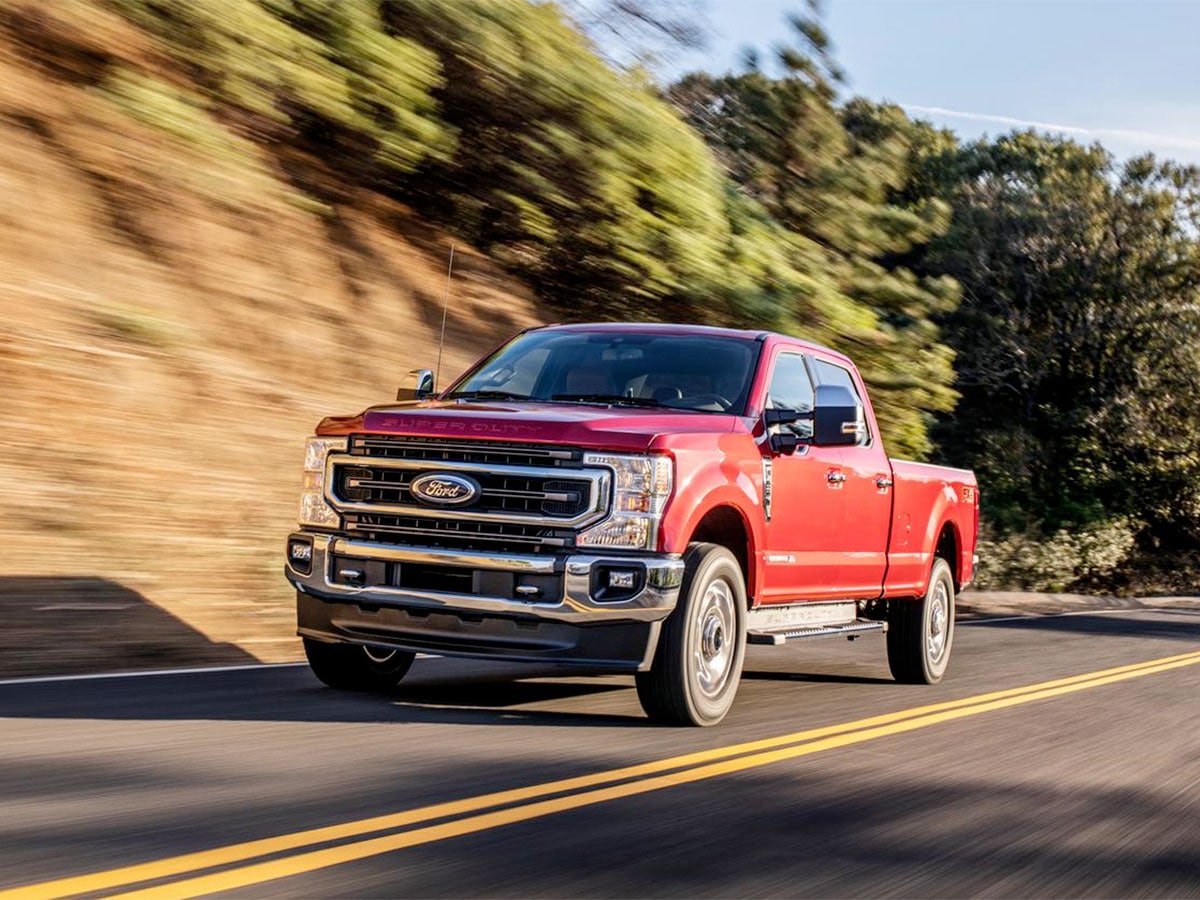Table of Contents
- – Which Drivetrain is Right for You? FWD vs AWD ...
- – What Makes Front-Wheel Drive a Good Option?
- – AWD Explained: What is All-Wheel Drive?
- – FWD vs AWD: Comparing Performance in Ford Vehi...
- – Which Ford Models Have FWD and AWD?
- – Fuel Economy of FWD and AWD Ford Models
- – Which Drivetrain Suits You: FWD or AWD?
- – Modern Ford of Boone ...

Which Drivetrain is Right for You? FWD vs AWD Explained
When shopping for a new vehicle, one of the most important decisions you'll need to make is choosing between All-Wheel Drive (AWD) and Front-Wheel Drive (FWD). Each drivetrain offers distinct advantages depending on your driving habits, weather conditions, and overall needs. At Modern Ford of Boone, we’ll help you understand the key differences between these two drivetrain types, so you can make an informed decision when selecting your next Ford vehicle.
What Makes Front-Wheel Drive a Good Option?
Front-Wheel Drive (FWD) means the engine's power is delivered to the front wheels of the vehicle. This setup is common in many compact and mid-sized cars, as it offers numerous benefits in terms of fuel efficiency and vehicle cost. FWD vehicles are often lighter, more affordable, and more fuel-efficient than their AWD counterparts. Since the engine's weight is over the driving wheels, FWD vehicles typically offer better traction on dry and mildly wet roads.
However, FWD vehicles may struggle in challenging weather conditions, such as heavy snow or ice, due to the limited traction at the front wheels. They also tend to handle less predictably in aggressive driving situations, as they don't distribute power to all four wheels.
AWD Explained: What is All-Wheel Drive?
All-Wheel Drive (AWD), on the other hand, sends power to all four wheels of the vehicle, providing enhanced stability and traction. This drivetrain is particularly beneficial for drivers who often encounter challenging road conditions, such as snow, rain, or rough terrain. AWD systems automatically distribute power to the wheels with the most grip, helping to prevent wheel spin and maintaining control in less-than-ideal conditions.
AWD offers enhanced handling and control in rough conditions, but it is generally heavier and less fuel-efficient than FWD. Maintaining an AWD system can also be more expensive due to its complexity and the extra components involved.
FWD vs AWD: Comparing Performance in Ford Vehicles
The performance and handling differences between FWD and AWD depend on where and how you drive. If you mostly drive in mild weather and on paved roads, FWD vehicles tend to provide enough traction. FWD also offers better fuel efficiency, which makes it a smart option for those with long commutes.
If you frequently drive in harsh weather or rough terrain, AWD is the better option for you. It provides superior traction and stability, making it ideal for navigating snow, rain, or rough off-road conditions. AWD gives you the confidence to handle any driving environment.
Which Ford Models Have FWD and AWD?
Ford offers a variety of models with both FWD and AWD options. Models like the Ford Escape, Ford Focus, and Ford Fusion feature FWD, offering efficiency and affordability for drivers who stay mostly on paved roads.
If you're interested in an AWD Ford, consider the Ford Explorer, Ford Edge, or the Ford Bronco. These vehicles are designed to tackle tougher conditions, making them perfect for outdoor enthusiasts or anyone who needs a little extra traction.
Fuel Economy of FWD and AWD Ford Models
Fuel efficiency is another important factor to consider when choosing between FWD and AWD. FWD vehicles tend to be more fuel-efficient, as they are lighter and have a simpler drivetrain. This means lower fuel consumption, which is a key benefit for those looking to save on gas.
While AWD provides better traction, it is typically less fuel-efficient due to the added weight and complexity of the drivetrain. However, for those who drive in tough conditions, the added stability and control may make the slight decrease in fuel economy worth it.

Which Drivetrain Suits You: FWD or AWD?
Choosing between FWD and AWD depends on your lifestyle. If you mostly drive on highways or city streets and experience mild weather, FWD might be the ideal option for you. It's economical and requires less maintenance, making it a practical choice.
If you often encounter challenging driving conditions, such as snow, ice, or rough terrain, AWD is the better choice. It offers enhanced stability and control, ensuring your safety and confidence behind the wheel.
Table of Contents
- – Which Drivetrain is Right for You? FWD vs AWD ...
- – What Makes Front-Wheel Drive a Good Option?
- – AWD Explained: What is All-Wheel Drive?
- – FWD vs AWD: Comparing Performance in Ford Vehi...
- – Which Ford Models Have FWD and AWD?
- – Fuel Economy of FWD and AWD Ford Models
- – Which Drivetrain Suits You: FWD or AWD?
- – Modern Ford of Boone ...
Latest Posts
Untitled
AWD vs FWD: Which Ford Drivetrain Should You Choose?
Obtain Your Kia Ready for the Road with Expense Walsh Kia Solution Specials!
Navigation
Latest Posts
Untitled
AWD vs FWD: Which Ford Drivetrain Should You Choose?
Obtain Your Kia Ready for the Road with Expense Walsh Kia Solution Specials!